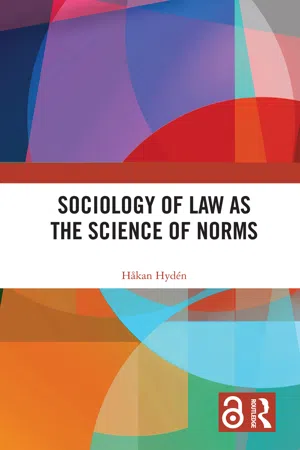
Sociology of Law as the Science of Norms
Håkan Hydén
- 328 Seiten
- English
- ePUB (handyfreundlich)
- Über iOS und Android verfügbar
Sociology of Law as the Science of Norms
Håkan Hydén
Über dieses Buch
This book proposes the study of norms as a method of explaining human choice and behaviour by introducing a new scientific perspective.
The science of norms may here be broadly understood as a social science which includes elements from both the behavioural and legal sciences. It is given that a science of norms is not normative in the sense of prescribing what is right or wrong in various situations. Compared with legal science, sociology of law has an interest in the operational side of legal rules and regulation. This book develops a synthesizing social science approach to better understand societal development in the wake of the increasingly significant digital technology. The underlying idea is that norms as expectations today are not primarily related to social expectations emanating from human interactions but come from systems that mankind has created for fulfilling its needs. Today the economy, via the market, and technology via digitization, generate stronger and more frequent expectations than the social system.
By expanding the sociological understanding of norms, the book makes comparisons between different parts of society possible and creates a more holistic understanding of contemporary society. The book will be of interest to academics and researchers in the areas of sociology of law, legal theory, philosophy of law, sociology and social psychology.
Häufig gestellte Fragen
Information
1 Why do we need a science of norms?
1.1 Different perspectives of norms
1.1.1 Design of the book
1.1.2 Norms from an analytical perspective
Inhaltsverzeichnis
- Cover
- Half Title Page
- Title Page
- Copyright Page
- Contents
- Acknowledgement
- Preface
- 1 Why do we need a science of norms?
- 2 Two competing normative worlds and their internal changes over time
- 3 About norms and action systems
- 4 Law as a system of norms
- 5 The evolution of norms and law
- 6 Toward a theory of legal change
- 7 A science of norms: a science for the 21st century
- Bibliography
- Index